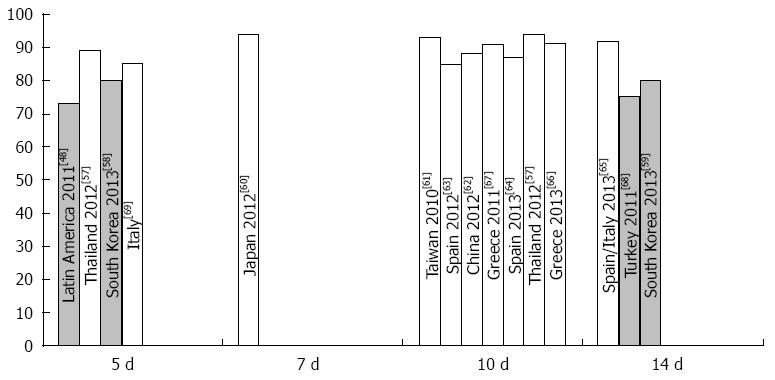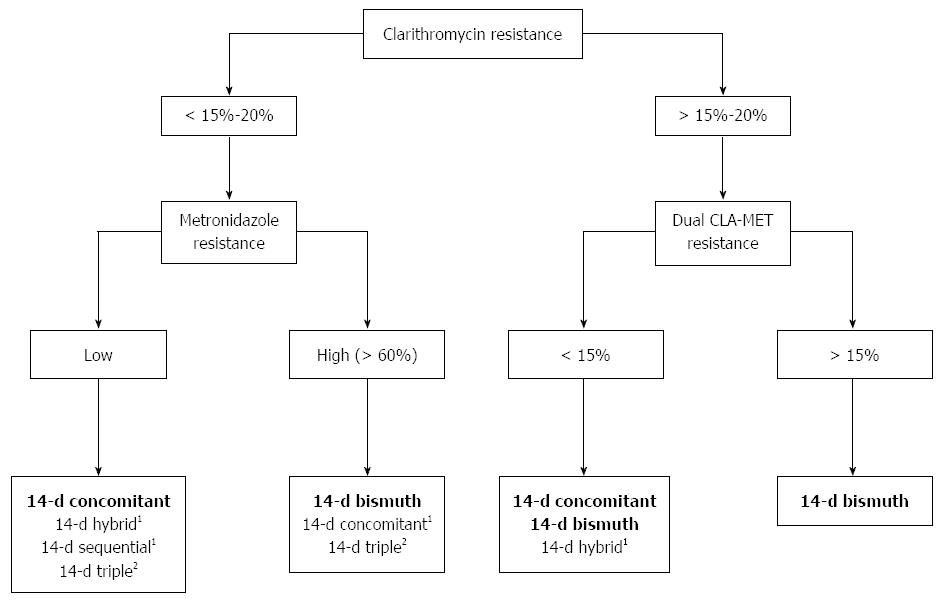Copyright
©2014 Baishideng Publishing Group Inc.
World J Gastroenterol. Aug 14, 2014; 20(30): 10338-10347
Published online Aug 14, 2014. doi: 10.3748/wjg.v20.i30.10338
Published online Aug 14, 2014. doi: 10.3748/wjg.v20.i30.10338
Figure 1 Intention-to-treat cure rates of concomitant therapy over the last three years in studies conducted in Latin America, Asia and Europe, broken down by the duration of therapy.
Studies with Intention-to-treat (ITT) < 85% are grey marked.
Figure 2 Forest plot comparing sequential and concomitant therapy with a similar duration[72].
Figure 3 Regionalized therapeutic algorithm for Helicobacter pylori infection, based on clarithromycin and metronidazole resistance patterns.
1Use conditioned to the rate of dual-resistant strains. Sequential, hybrid and concomitant therapies are expected to fail if the rate of dual clarithromycin- and metronidazole-resistant strains in > 5%, > 9% and > 15%, respectively; 2Use if eradication rates > 90% have been documented.
-
Citation: Molina-Infante J, Gisbert JP. Optimizing clarithromycin-containing therapy for
Helicobacter pylori in the era of antibiotic resistance. World J Gastroenterol 2014; 20(30): 10338-10347 - URL: https://www.wjgnet.com/1007-9327/full/v20/i30/10338.htm
- DOI: https://dx.doi.org/10.3748/wjg.v20.i30.10338











